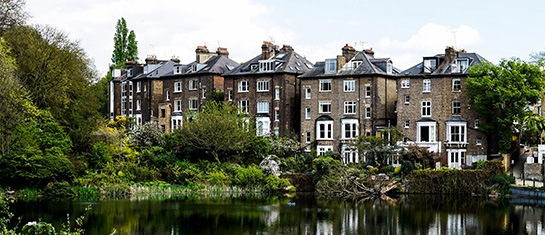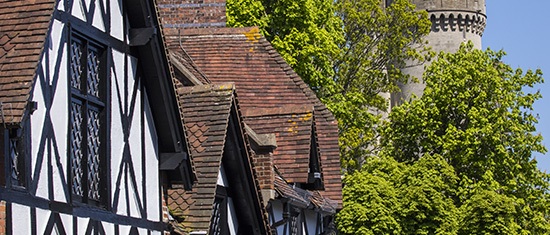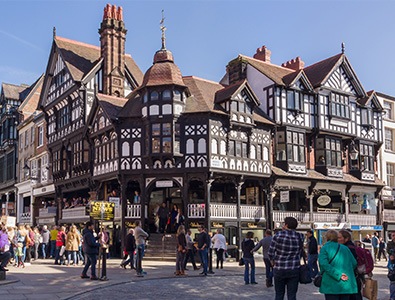Historic Building Repairs
For Staffordshire And the West Midlands
David Rudge Associates Specilaise In Restorations And Repairs In Staffordshire, Cheshire, Shropshire And Derbyshire
Using incorrect restoration materials can cause potential damage to the original structure, producing cracking and other unwanted results.
All types of building materials move at different speeds during the natural expansion and contraction caused by the elements and other factors. If a refurbishment material is not compatible with original building materials, complications can occur.

- Renaissance c. 1425-1600
- Tudor 1485-1603
- Elizabethan 1480-1620
- Jacobean 1580-1660
- Neoclassicism 1720-1837
- Georgian 1720-1840s
- Gothic Revival 1740s
- Victorian 1837-1901
- Edwardian 1901-1910
Our specialist listed building restoration experts produce historical research into the original materials used to construct historical buildings. This ensures that all building and restoration work that we undertake uses materials that are the same as the building or that complement it.
David Rudge Associates can help with:
Please call us on 01889 504219 to find out how our services can benefit you.
What is Historic Building Restoration?
The project of restoration is used for historic buildings to make them look new again, after being in bad condition from going through many years of different weather conditions. Bad weather conditions and no maintenance can cause decay to the building itself, further causing it to deteriorate.

Restoration will preserve the historic building to ensure the history is still remembered for future generations. However, the restoration process requires a set of criteria to ensure the building itself can be restored due to legal implications. These include:
- The repairs and restoration will last a long time, and won't cause damage to the parts of buildings of the building that are remaining.
- The reason why the building has decay or damage wasn't caused by a major historical event.
- If the restoration would cause money problems or loss of business.
Dangers Of Not Restoring Historic Buildings
There are many dangers of not restoring historic buildings. For example, you could lose the building altogether, which means the history for that building will be lost forever.
If the building itself is an attraction, and there are visitors to the building, then there could be a danger that the building would collapse and potentially hurt a member of the public, or staff working at the building.
How Does Historic Building Restoration Work?
After the restoration plans have been given the go-ahead, you can start the process. The process you go through for restoring a historic building involves a doff cleaning system which is basically a high-pressure steam.
This high-pressure system can be used on stone and concrete and will get rid of dirt and debris, and is specifically used for historical buildings. This system also helps with damage such as:
- Paint
- Bird droppings
- Graffiti
- Wax
What is Listed Building Restoration?
The process of listed building restoration involves highly trained and qualified professionals. Listed buildings are protected, and can be for many reasons, so it's important that the plans are accepted and allowed before any work is carried out.
The plans will be remade until they are perfect and are given the go-ahead. To do the restoration for a listed building, you'll need a structural engineer, an architect and consultants to ensure the project runs smoothly.
Who can Complete Listed Building Restorations?
Only highly qualified, reliable and professional engineers, consultants and architects can complete listed building restorations, and sort the planning process; otherwise, the plans won't be given consent.
The trained professionals can give you expert advice on how to change your plans to fit in with the accepting factors, and the best way to go about the construction work without causing any damage.
Listed Building Restorations in Staffordshire
If you own or maintain a listed building in Staffordshire or the surrounding areas, it is essential that you get the correct permissions from the relevant authorities before you carry out any restoration or repair work.
You need to get adequate permission before completing any of the following work on listed buildings:
- Removing external surfaces
- Installing roof-lights or dormer windows
- Brickwork Painting
- Window and doors replacement
- New doorways installation
- Roofing materials replacement
- Removing or moving internal walls
- Panelling, fireplace or staircase alteration and removal
- Attaching aerials, satellite dishes and burglar alarms
Our experienced team of restoration experts work to preserve the original building by ensuring that any updates or alteration work is completed using complementary materials that work with the existing building to produce long-lasting results.

What can you do to a grade II listed building?
A Grade II listed building cannot be demolished, added to by extensions, or changed unless given consent by the Local Planning Authority.However, you can make a few changes, as long as you follow the guidelines. Please contact us for more information regarding Grade II listed buildings.
Frequently Asked Questions
About Historic Building Repairs in Staffordshire
Find out more about historic building repairs in Staffordshire from our frequently asked questions. If you require any further information, feel free to get in contact on 01889 504219.
A historic building is typically defined as one that holds significant architectural, cultural, or historical value.
This could include buildings over a certain age (often 30 years or older) and those that have been designated as "listed" or "protected" due to their importance.
In many countries, historic buildings are subject to conservation laws that aim to preserve their unique features for future generations.
Yes, repairing historic buildings often requires compliance with strict regulations designed to preserve their original character.
These may include local, national, or international guidelines on conservation, as well as requirements for the use of specific materials and techniques.
For buildings that are listed or in conservation areas, you'll typically need to apply for permissions or consultations with heritage bodies before undertaking repairs.
Repairs to historic buildings should use materials that match the original construction as closely as possible.
This ensures that the building’s integrity and character are maintained. Traditional materials, such as lime mortar, natural stone, timber, and clay tiles, are often preferred.
However, modern alternatives may sometimes be appropriate, provided they are compatible with the building's historic fabric and do not compromise its appearance or durability.
To ensure repairs are sympathetic to the building’s character, it's important to work with specialists who understand historic construction methods and materials.
Thorough research into the building’s history and original design is essential.
It's also advisable to consult with conservation officers or heritage organisations to ensure that proposed repairs comply with relevant guidelines and preserve the building’s authenticity.
Yes, repairs to listed buildings typically require planning permission, even if the work seems minor.
Listed status means the building is legally protected, and any changes, repairs, or alterations must be approved by the local planning authority.
This is to ensure that repairs do not alter the building’s historical or architectural significance. Always consult with your local council before beginning any work on a listed building.
Modern materials can sometimes be used in historic building repairs, but they must be chosen carefully.
They should be compatible with traditional materials and techniques, and their use should not detract from the building's historic value.
For example, while modern insulation or waterproofing materials may be used, they must allow the building to "breathe" and prevent moisture buildup, which could cause further damage.
Always consult with a heritage professional before selecting modern materials for repairs.
Historic buildings often face a range of issues, including:
- Damp: Due to age, poor maintenance, or inadequate waterproofing.
- Structural problems: Settling foundations, cracked walls, or weakening timbers.
- Decay of materials: Weathered stone, rotting wood, or rusting ironwork.
- Outdated or inappropriate previous repairs: Often, historic buildings may have undergone past repairs that didn’t follow best practices or used unsuitable materials.
- Fire damage: Particularly in older buildings with wooden frameworks or outdated electrical systems.
Look for contractors who specialise in heritage or conservation work.
These specialists are usually trained in traditional building techniques and materials and are familiar with the legal and regulatory requirements for working on historic properties.
You can find recommended contractors through heritage organisations, conservation societies, or your local planning authority.
It's also wise to check for membership in recognised bodies, such as the Society for the Protection of Ancient Buildings (SPAB) or similar groups in your region.
There are various grants, subsidies, and tax incentives available for the repair and conservation of historic buildings.
These can be offered by government agencies, charitable organisations, or local councils. In the UK, for example, Historic England offers funding for certain conservation projects.
You may also qualify for tax relief or grants if your property is listed or in a conservation area. It's a good idea to contact your local heritage body or planning office to find out about specific funding options in your area.
Regular maintenance is key to preventing further damage to a historic building. This includes:
- Checking for leaks or damp and ensuring proper drainage around the property.
- Repointing stone or brickwork to keep water from penetrating the walls.
- Cleaning gutters and downspouts to prevent water damage.
- Inspecting the roof and ensuring tiles, slates, and flashing are intact.
- Addressing any cracks or structural damage as soon as possible to prevent them from worsening.
You should also work with a conservation specialist for periodic inspections to identify potential issues before they cause significant damage.
Contact Us for Historic Building Repairs
Do you require Historic Building Repairs? Our expert building restoration team undertakes restoration, repair or alterations on listed or historic buildings in Derbyshire, Staffordshire, Shropshire, Cheshire and the West Midlands.
Please call us on 01889 504219 to find out how our services can benefit you.